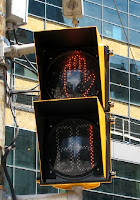My first day of the holidays I got myself into an interesting project – setting up a satellite dish that receives Astra 19.2 (German TV) and Astra 28.2 (major UK TV stations). Going back between my roof and living room I finally got it to work – thanks to many posts on the Internet. That brings me back to a question I ask myself more and more (not just for setting up TVs): how did people share technical and practical information before the Internet? It seems that the Internet really is a catalyst for implementation.
After having the hardware in place (which is more difficult than the theory of pointing it at a certain angle – especially without the right tools) I was surprised by the number of channels and the user interfaces of the digital sat receivers. It seems that much of the usage and interaction concept is still from a time where there were 3 channels – youtube is much easier to use… Perhaps satellite television could provide a much more exciting experience with new means for interaction (perhaps those devices are out there an I just got the poor ones).

















